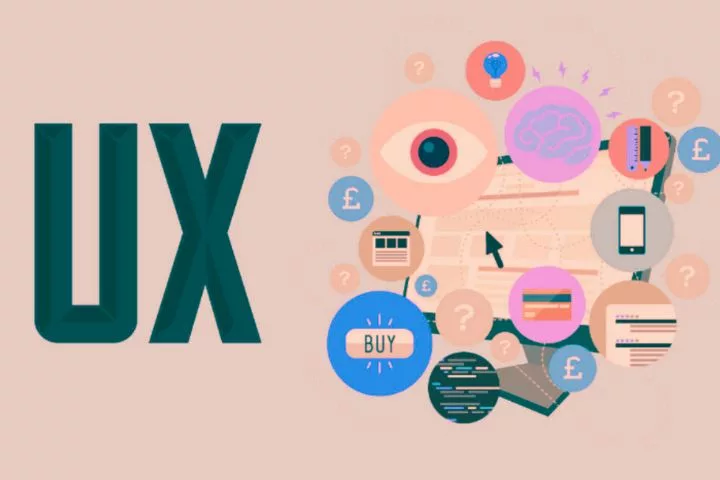UX Design – Know About The History, Usages And Rules Of It

What is UX Design?
To familiarize you with our profession as well as possible, we have decided to unravel its function as best as possible for you. Since you entered the digital world, you have probably heard of UX design.
But then, what does this acronym mean? UX is an acronym that means User experience, or for us: User experience.
If one might think that this discipline inspires novelty and modernity, this is, in fact, not quite the case. Indeed user experience design has a much less recent history.
History of UX
It was in the 1940s in the Toyota factory that the first user test emerged to make the production line more efficient. We then speak of the first reflections of the relationship between man and machine.
If today we think of UX design as a methodology used mainly in creating digital web & mobile interfaces, this is not its only use. UX design will also interfere with the user journeys of museums, exhibitions, shops, and other places.
Its role is very present in our society today, and it can sometimes be curious to recognize a good or bad UX in everyday life. But first, some basics.
Cognitive ergonomics
First, we will address the subject of cognitive ergonomics, which focuses on the main mental processes. First, physical ergonomics is defined as adapting a product or a work situation to a user.
Conversely, cognition relates to all the primary functions of the mind (perception, language, memory, reasoning, decision, movement, etc.)
Cognitive ergonomics is, therefore, the study of interactions with an interactive device or product that requires the use of significant human mental functions. She also investigates possible mental load issues that result from this interaction.
The mental load
In this paragraph, we will discuss the concept of mental load, still little known by the general public. The need for reflection when using an interface is imperatively linked to a mental load.
The user’s mental load is defined by this curve: calm and boredom, positive stress, and negative stress. Positive stress will boost your user’s performance, and they will be energized and focused. Conversely, negative stress will cause him to become exhausted.
It is, therefore, necessary for the smooth running of your project to know your users well to anticipate the possible benefits or harms of stress or boredom in their journey. In addition, the mental load will not be the same for all users.
Examples of ux design
Example 1: A cinema ticket reservation application. To buy a seat, your user must create an account, fill out a form and confirm their registration by email.
All these tasks complicate his experience. Imagine that the user must systematically close one or more pop-ups, and his mental load explodes. Poof! It uninstalls the app.
Example 2: On the contrary, positive stress will generate positive consequences for your project. Some processes include the countdown.
Only four copies left before breaking! Force the user to make a choice and force engagement at the same time.
Some questions
To be able to prevent the positive and negative aspects of this mental load, we advise you to ask yourself specific questions:
▸ Is the task easy for my user to accomplish?
▸ Is my user performing well enough?
▸ Is the time to accomplish this task reasonable?
▸ Does accomplishing this task create stress?
In conclusion, it is essential to think carefully about managing this mental load and simplify your users’ experience as much as possible to create an ergonomic web interface.
Utility & Usability
The question of the mental load is not the only factor to be taken into account to achieve an ergonomic interface. In this case, what does a successful ergonomic interface contain? .
First, you will have to answer the question of usefulness, what is your interface for, and what is its purpose? This needs to know the needs of your users.
According to these needs, what are the best possible services? Once your objective has been defined, you have the possibility of engaging in micro-utilities.
These will allow you to sell your product better and promote your information. Micro-utilities trigger the decision-making process and, therefore, commitment.
They are closely linked to strategic and marketing choices.Now let’s talk about usability; usability is the implementation ability of the interface.
According to the ISO 9241 standard, “a product is said to be usable when it can be used with effectiveness, efficiency, and satisfaction by given users, seeking to achieve given objectives.
In a given context of use. In other words, the more your interface allows you to achieve the set objective, the more you win. Usability is essentially about user satisfaction; the user-centric design is all about.
Some rules of UX design
The primary objective is to improve human-machine interaction and facilitate the use and learning of interfaces. For this, we must create a
user experience in three points:
▸ Effective: successfully doing what I want (general public)
▸ Efficient: Acting quickly and successfully (expert)
▸ Satisfactory: gratification of use (aesthetics)
It is helpful to know that ergonomics is not independent of design, development, marketing, etc. It must be present throughout the project. Ideally, it would help if you started with ergonomics.
It allows you to make very impactful decisions, which are impossible to apply at the end of the project. The objective of web ergonomics is to adapt a site or an app to its audience; the key is to understand its users.
From there, your thinking can go towards improving ergonomics. You have to understand what characterizes them as human beings, then as users of your interface.






